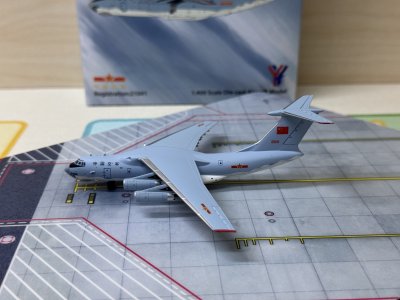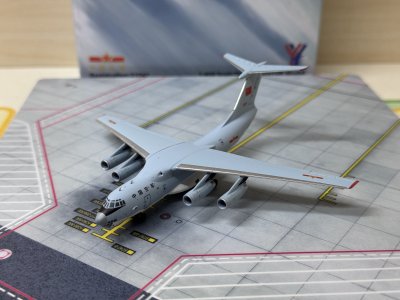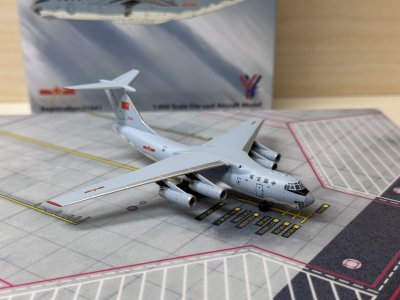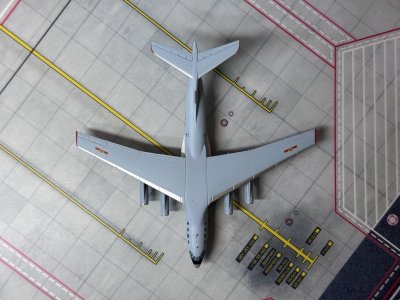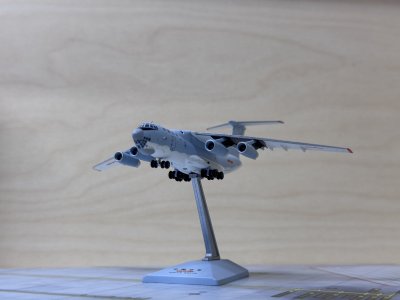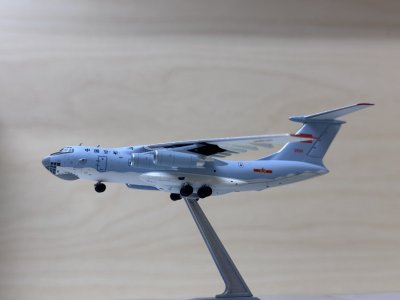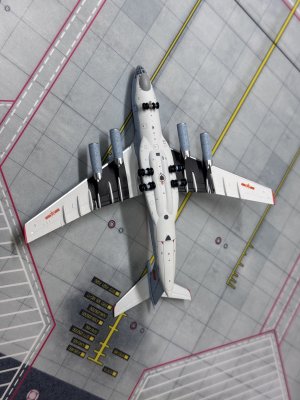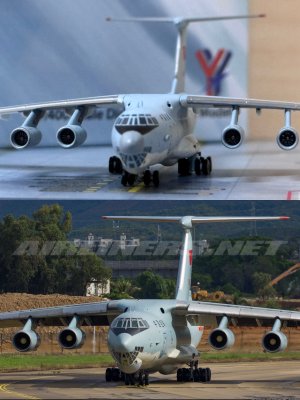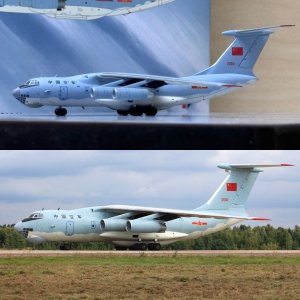Pacific
Active member
YY 1:400 Il-76MD Chinese Air Force 21041
The Il-76 has a length of 46.59 meters, a height of 14.76 meters, a wingspan of 50.5 meters, an empty weight of 95,200 kilograms, a maximum takeoff weight of 210 tons, and a maximum flight speed of 800 kilometers per hour. The Il-76 adopts an all-metal semi-monocoque fuselage, and the wing is a cantilever all-metal multi-spar upper wing. The landing gear is multi-wheel type to adapt to takeoff and landing on unpaved harsh runways.
In the 1960s, the U.S. jet large transport aircraft C-141 "Starlifter" came into being. At that time, the main transport aircraft equipped by the Soviet Air Force was the An-12 with turboprop engines. Faced with the gap between the two, the Soviet Ministry of Aviation was required to quickly develop a new-generation transport aircraft capable of competing with the C-141. Its main technical requirements were: first, flying 5,000 kilometers with a load of 40 tons in less than 6 hours; second, having the ability to take off and land on simple airports; third, adapting to various climatic conditions, especially the severe cold of Siberia.
There was a dispute over whether the Il-76 should fly over Moscow during its maiden flight. The test airport was only 6 kilometers away from the Kremlin, and if the prototype, which took to the sky for the first time, had a malfunction over a big city, the consequences would be quite serious. However, a successful test flight would bring great influence and publicity effect. Finally, the aircraft was approved to fly over Moscow. On March 25, 1971, the Il-76 prototype made its maiden flight. By the end of the test, there were 4 prototypes of the Il-76. These 4 prototypes took off and landed 964 times, flew for 1,676 hours, and conducted tests such as air transportation and airdrop during the period.
The Il-76 set 25 world records as soon as it was launched. The maximum effective load at 2,000 meters was 70.12 tons, and the maximum load at 11,876 meters was 70 tons...
In 1975, the Il-76 officially entered service with the Soviet Air Force.
The Il-76 has a length of 46.59 meters, a height of 14.76 meters, a wingspan of 50.5 meters, an empty weight of 95,200 kilograms, a maximum takeoff weight of 210 tons, and a maximum flight speed of 800 kilometers per hour. The Il-76 adopts an all-metal semi-monocoque fuselage, and the wing is a cantilever all-metal multi-spar upper wing. The landing gear is multi-wheel type to adapt to takeoff and landing on unpaved harsh runways.
In the 1960s, the U.S. jet large transport aircraft C-141 "Starlifter" came into being. At that time, the main transport aircraft equipped by the Soviet Air Force was the An-12 with turboprop engines. Faced with the gap between the two, the Soviet Ministry of Aviation was required to quickly develop a new-generation transport aircraft capable of competing with the C-141. Its main technical requirements were: first, flying 5,000 kilometers with a load of 40 tons in less than 6 hours; second, having the ability to take off and land on simple airports; third, adapting to various climatic conditions, especially the severe cold of Siberia.
There was a dispute over whether the Il-76 should fly over Moscow during its maiden flight. The test airport was only 6 kilometers away from the Kremlin, and if the prototype, which took to the sky for the first time, had a malfunction over a big city, the consequences would be quite serious. However, a successful test flight would bring great influence and publicity effect. Finally, the aircraft was approved to fly over Moscow. On March 25, 1971, the Il-76 prototype made its maiden flight. By the end of the test, there were 4 prototypes of the Il-76. These 4 prototypes took off and landed 964 times, flew for 1,676 hours, and conducted tests such as air transportation and airdrop during the period.
The Il-76 set 25 world records as soon as it was launched. The maximum effective load at 2,000 meters was 70.12 tons, and the maximum load at 11,876 meters was 70 tons...
In 1975, the Il-76 officially entered service with the Soviet Air Force.

